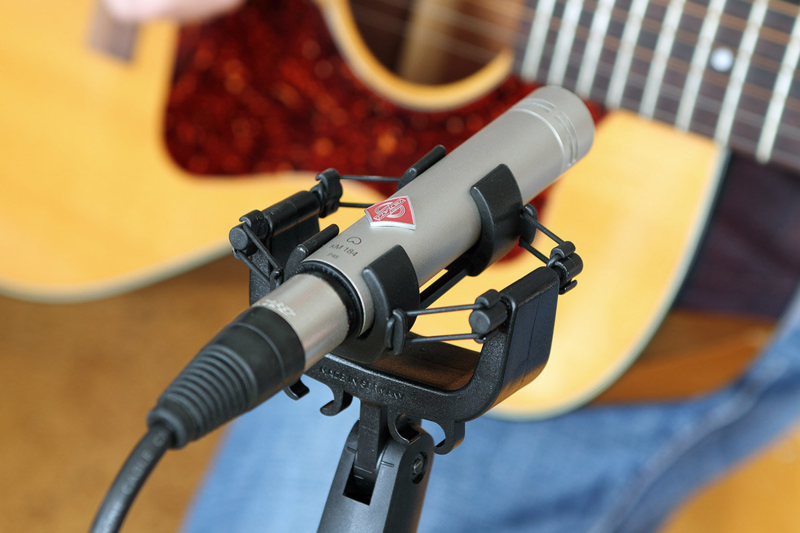DO I REALLY NEED A SHOCK MOUNT?
If you’ve only used stage mics so far, you may never have felt the need for a shock mount. And isn’t your home studio a much more controlled environment? Here’s how a shock mount can improve your recordings.
GREAT LOW END WITHOUT RUMBLE
Most studio microphones come with a simple swivel standmount, and at additional cost you can purchase an optional shockmount (also called “spider mount” or “elastic suspension”). This begs the question: Do you really need a shockmount, or is the swivel standmount good enough for your needs?
Well, it depends! In general, studio microphones are very sensitive to rumble and vibrations (other terms are “structure borne noise” or “impact noise”). Much more so than stage microphones. That’s because studio quality transducers are designed for extended low frequency response. But you can only make use of this extended low end, if the bass frequencies you want to record aren’t drowned in rumble noises. The best way to ensure clean bass is to decouple the mic mechanically via an elastic suspension.
SOUND SAMPLES: TWO NEUMANN TLM 103 WERE MOUNTED ON THE SAME MICROPHONE STAND (USING A STEREO BAR) – ONE WITH THE EA1 SHOCKMOUNT, ONE WITH THE SWIVEL MOUNT. WE HEAR A GUITAR CHORD FOLLOWED BY A LIGHT KICK AGAINST THE MIC STAND
- TLM 103 with shockmount
- TLM 103 with swivel mount
- TLM 103 with swivel mount, processed with a steep low cut (48 dB/oct bei 100 Hz)
WHY NOT USE A LOW CUT?
If the sound source doesn’t contain useful information in the very low frequencies, you could also use an electronic low cut filter to get rid of rumble noises. But that only works as long as those rumble noises don’t get too loud. If, for instance, the singer accidentally knocks against the mic stand, the resulting vibrations may have so much energy as to overload the mic electronics. A low cut can’t undo that, because it’s not only the low frequencies that distort, but the entire signal will be clipped. A shock mount is much safer, because it attenuates impact noise before it even reaches the mic.
Some newer microphones, such as the Neumann TLM 102, sport an internal shock mount, i.e. the capsule mount is shock absorbent. This helps to make a clean recording, but an (additional) external shock mount is much more effective.
ORIGINAL VS. THIRD PARTY SHOCK MOUNTS
It is important to know that, for maximum shock absorption, the elasticity of the suspension must match the mass of the microphone. That’s why quality manufacturers (such as Neumann) offer a dedicated shock mount for each microphone model. The “universal” shockmounts offered by third party manufacturers usually come with (much) too tight ribbons for the average one-pound-microphone to offer optimal rumble protection.
BOTTOM LINE
For clean, rumble-free recordings, the best solution, by far, is the dedicated shockmount from the original manufacturer of your particular mic model.





